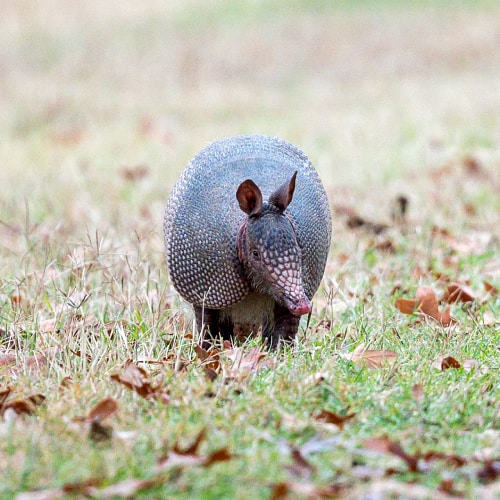
Known for their digging abilities and their somewhat primitive appearance, armadillos are fascinating mammals. Now fairly rare in the rest of the world apart from some parts of the Americas, they were once prolific enough to have species falling under nine genera. Today, there are 21 living species of armadillos; only a single one is present in the US – the nine-banded armadillo (Dasypus novemcinctus).
Armadillos have evolved to feed on hundreds of different types of food, including insects, snails, and small reptiles. In the absence of these live sources of nutrients, they may occasionally feed on plant matter. Though fruits, nuts, and seeds comprise a small part of their diet, they may venture into orchards, cottage gardens, and cold frames in search of them. They may also creep into private property in search of grub, knocking over pots and digging up lots of soil in the process.
If armadillos visit your garden and frequently leave you with a mess of disturbed soils and upturned roots, you might want to consider taking effective measures to keep them away. Fortunately, this doesn’t always entail having to hire an exterminator or making use of dangerous toxins. Armadillos hate strong fragrances, so you can discourage them from approaching your space by cultivating strongly-scented plants!
1) Garlic (Allium sativum)
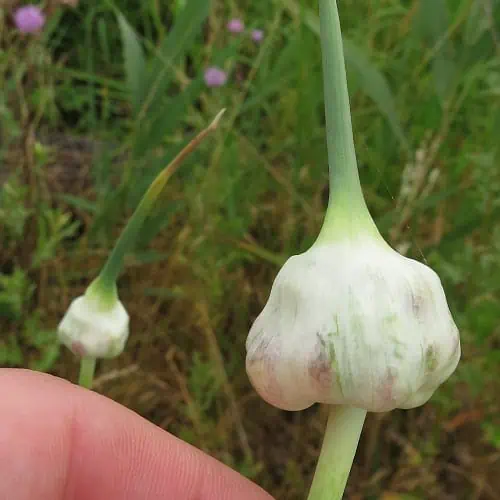
The list of benefits from both cultivating and consuming garlic can go on and on. This miracle root crop is truly one of the most useful and powerful plants to grace our gardens and kitchens. Though it is associated with fantastic flavors and surprising medicinal cures for us humans, its scent is perceived as offensive by so many small pests and troublesome animals.
Armadillos heavily rely on their sense of smell to locate food and shelter because they have poor eyesight. Their sensitive snouts can detect the presence of strong and foul scents from a distance. The sulfuric compounds in garlic release a pungent aroma that undoubtedly stings their nostrils and signals the presence of undesirable, potentially toxic substances.
The leaves of well-established garlic plants do emit a mild scent when they are mechanically damaged, but it’s their crushed bulbs that work best. To ensure that the smell of garlic is extra potent in your yard, you might want to incorporate its oils into a plant-based spray. The aromatic solution can then be targeted at key points of the garden, such as fence gaps through which armadillos may crawl.
2) Peppermint (Mentha x piperita)
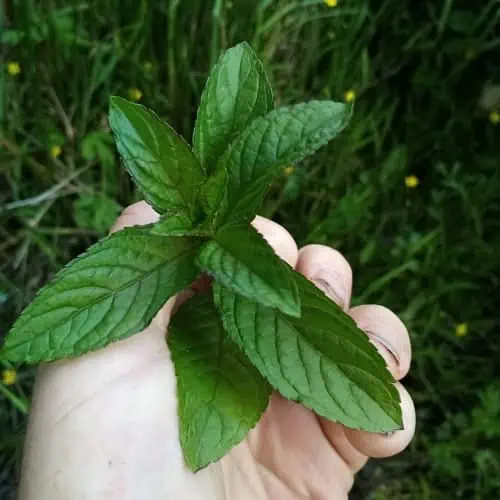
One of the most widely used herbs in the world, peppermint is actually a natural hybrid between two remarkably hardy parent plants – water mint (M. aquatica) and spearmint (M. spicata). Easy to cultivate, it is a fine addition to herb gardens in partly shaded locations. Able to self-propagate in moist, well-draining substrates, peppermint can be prolific enough to produce large fistfuls of high-quality leaves.
Of course, peppermint is best known for its sharp fragrance and flavor. Its fuzzy leaves emit a strong scent when they are rubbed or mechanically damaged. This exact scent, which might be highly desirable to us, is very effective at keeping grazers away. The chemicals that produce the plant’s scented oil, principally menthol and pulegone, also have insecticidal properties.
Peppermint can be used in many ways to repel armadillos. The simplest way, of course, is to cultivate dense stands of this herb and frequently crush its leaves. The oils of the leaves should release their strong fragrance, which may spread all throughout a small garden. If you’d like to distribute the scent to more spots around the home, consider incorporating this plant’s essential oils into a spray.
3) Lavender (Lavandula spp.)
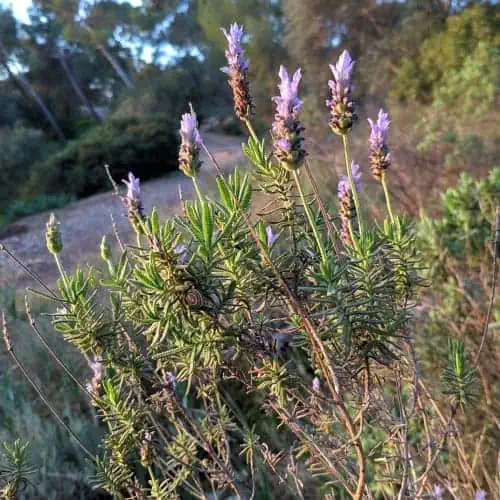
Fantastic as ornamentals because of their muted green tones, their textural blooms, and their tolerance for dry conditions, lavender is a great addition to temperate gardens. This plant comes in a few popular and economically important species, specifically English lavender (L. angustifolia) and French lavender (L. dentata). Both of these species and their close relatives can be used to deter armadillos.
Lavender essential oils are composed of potent phytochemicals like linalool and tannins. Collectively, these produce a fragrance that is strong enough to dissuade small, scent-sensitive mammals from entering the garden. While a dense stand of lavender should naturally emit this unmistakable scent, occasionally harvesting the floral spikes should release more oils. The cut flowers can then be spread around the garden.
Do note that, on its own, lavender may not be fragrant enough to keep armadillos away. Especially eager and determined ones might even sneak past lavender bushes without the slightest hesitation. It would be wise to use lavender alongside other natural repellents. A concert of strong scents should always work better than just a single one.
4) Catnip (Nepeta cataria)
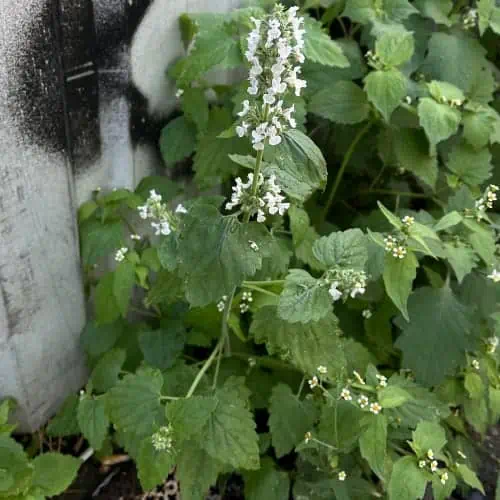
Many members of the mint family (Lamiaceae) have fantastic properties for deterring troublesome pests, and catnip is no exception. Though cats are known for having euphoric reactions to the leaves of this fragrant plant, many other small mammals and insects are smart to keep their distance. Once a true mystery to botanists, the effects of catnip on animals are now starting to be unraveled.
Catnip can function as a relaxant because its essential oils contain compounds that strongly affect the nervous system. Nepetalactone, the chief terpenoid in catnip, is now known for triggering actual pain or the sensation of itchiness in some pests. There is no scientific proof that it adversely affects armadillos or small mammals in this way, but the essential oil is likely fragrant enough to make them think twice.
Try planting catnip in plots of herbs or around beds that seem to be frequented by armadillos. Its chemicals might force insects, which are the favored prey types of armadillos, to settle elsewhere. Thus, both the strong smell of this plant and its tendency to repel insects should work in sync to keep your garden disagreeable to these armored pests.
5) Lemon (Citrus limon)
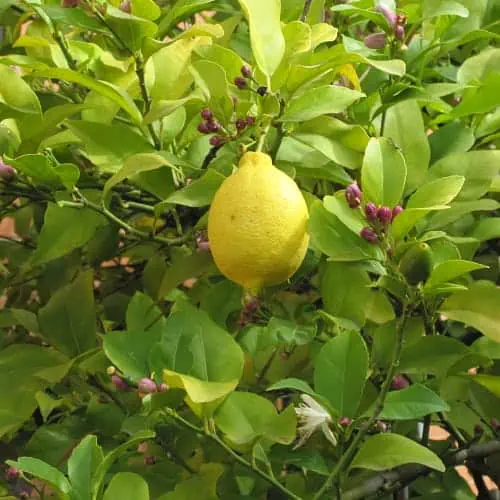
If you like lemons, you’ll certainly be glad to know that they have many uses in both the home and the garden! These intensely flavored fruits contain a wealth of phytochemicals; the most popular one is citric acid. Combined with its other aromatic terpenes, this acid emits a sharp smell that many small animals find pungent. Before citric acid was produced in an industrial and large-scale manner, it was solely harvested from lemons.
As armadillos dislike strong scents, you can bet they’ll shy away from anything that’s distinctly lemon, grapefruit, or orange-scented. Among citrus fruits, lemons contain the highest concentrations of citric acid in their juices. So, if you have an armadillo problem, you might want to grow this fruit for its repellent properties.
Understandably, waiting for a lemon tree to produce fruits can take some time and would potentially require more resources than growing herbs like mint and lavender. Store-bought lemon or other citrus fruit-based essential oils can be used as an alternative. These can be added to a water-based spray. Target existing burrows or any openings that armadillos may use to enter the garden.
6) Ylang-ylang (Cananga odorata)
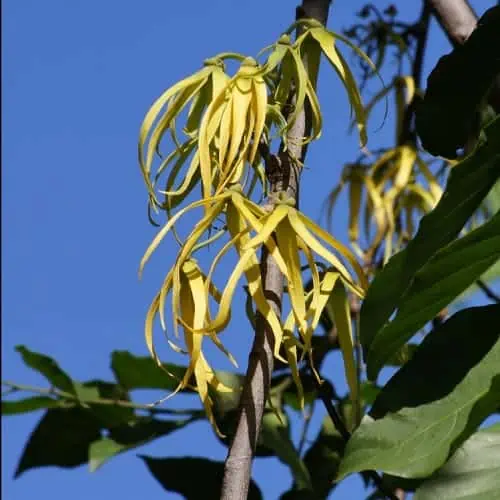
Highly valued for its floral fragrance, the ylang-ylang is a small- to medium-sized tropical tree. Also called the cananga tree, its oil is one of the most valuable ingredients in the perfume industry. This fascinating member of the Annonaceae or custard apple family grows to about 12 meters (39 feet) tall in optimal conditions. Its essential oils are largely concentrated in its star-shaped, yellow-green blooms.
Like the majority of the plants listed above, this species is not naturally found in the native range of any armadillo species. Thus, its fragrance can be assumed to be wholly foreign to these animals. Its muskiness and its strength are likely what would repel most animals that have never crossed its path before. If you’re confident you have the skills to grow and control the spread of exotic plants within your area, you might consider cultivating this species to repel some pests.
7) Pine trees (Pinus spp.)
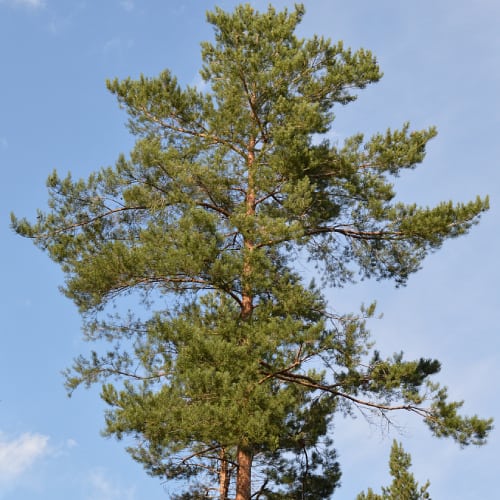
Pine trees are surprisingly effective at keeping armadillos away because of their scent. When they are plentiful, these trees emit a distinct and strong aroma that masks the smell of other plants and animals, including the preferred prey types of armadillos. The pine scent is generated by a complex mixture of chemicals, a couple of which are widely known to be effective as natural insecticides. These include limonene, linalool, and alpha-pinene.
Potent pine oils can actually be toxic in high concentrations, even to humans, as they can cause breathing problems and affect the nervous system. It’s no wonder, then, why armadillos know better than to go scavenging about for insects in dense plantations and forests of pine trees. Nonetheless, a couple of these trees should be completely safe to grow in a medium- to large-sized garden.
Apart from being unfavorable to armadillos due to their scent, pine trees can help eliminate some troublesome insects like mosquitoes, worms, and ticks. Reducing the availability of these insects should lead to fewer visits from armadillos, which will likely venture to other places in search of more food.
More Wildlife-Friendly Tips for Keeping Armadillos Away
1) Build an armadillo-proof fence

Many instances of wild animals invading private property are associated with a lack of proper fencing. Building the right type of fence and maintaining its quality should effectively keep out even the most determined of armadillos. The fence will have to be equipped with some special structures, however, as these armored mammals are known for being climbers.
Ideally, an armadillo-proof fence would be angled outward to prevent them from easily scaling the structure. An angle of about 40˚ should do. If you prefer to keep your fence fully upright, you can add an outwardly curved structure to the top. Moreover, as armadillos are diggers, you’ll need to ensure that an additional 12 inches (at the very least) of the fence should be buried. This should discourage burrowing animals and increase the stability of your fence at the same time.
2) Use a vinegar-based repellent spray

Vinegar should help drive away armadillos that are present in your yard. Its biting scent should also help keep them away from your home. A white vinegar-based repellent spray can be made by mixing 1 part vinegar and 1 part water in a bottle. Spray this onto areas of the yard that seem to be frequented by armadillos. Avoid getting the solution onto plants, however, as it may scorch their leaves or roots.
3) Remove sources of food, water, and shelter from the yard

Armadillos often enter gardens because they seek the very comforts that we ourselves yearn for in our homes. Naturalized gardens are the most appealing to them as these are relatively safe spots in which they can feed and burrow. The more diverse and unkempt your garden, the more likely it is that they’ll find it appealing. Making your yard inhospitable doesn’t always mean removing the elements that keep it looking natural, however.
One way to reduce populations of grub, which is often what armadillos are after, is by keeping the garden free of garbage, weeds, leaf litter, and pests. Proper landscaping should prevent water from accumulating in undesirable areas and attracting unwanted animals. Removing large waste materials, such as unused and spare pipes and tires, should also help eliminate potential hiding places for wildlife.
4) Install sprinklers

Motion-activated sprinklers are a great way to harmlessly startle wild animals and get them to leave. If you’d like to use one of these to repel armadillos, make sure to situate it wherever you think they are most likely to search for food or burrow into the ground. Some types of sprinklers have settings that allow for their activation at specific hours. These should be ideal as armadillos tend to be nocturnal.

